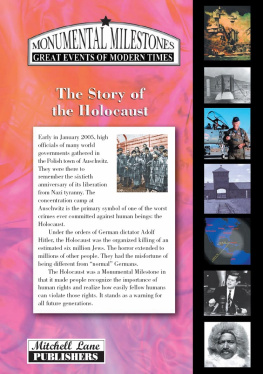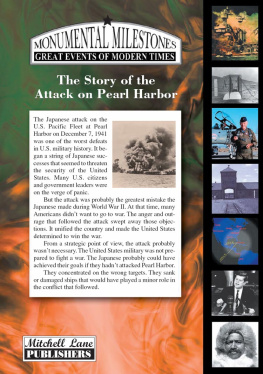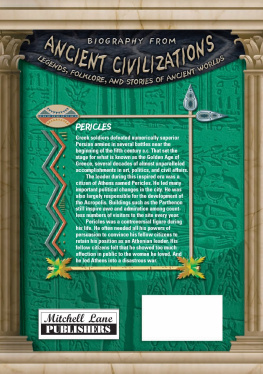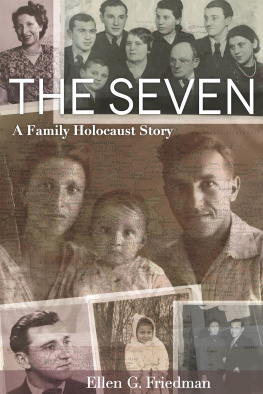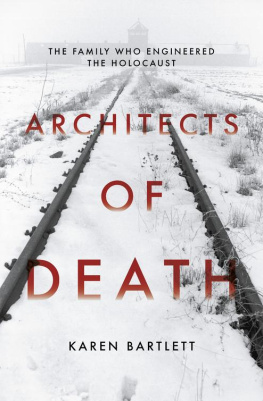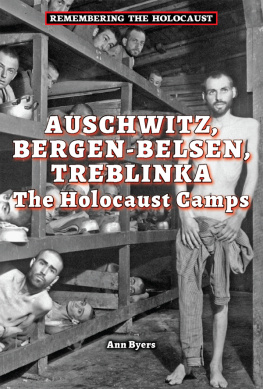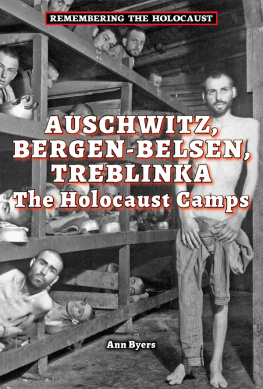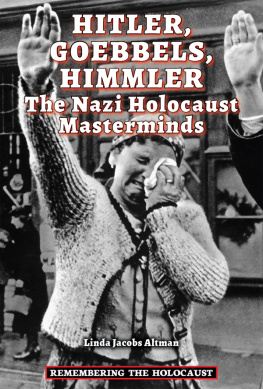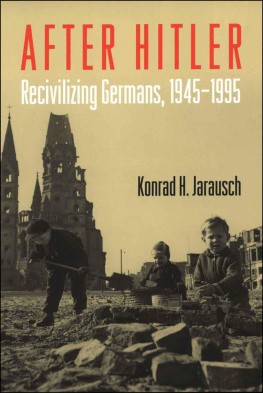

Titles in the Series
The Assassination of John F. Kennedy, 1963
Blitzkrieg! Hitlers Lightning War
Breaking the Sound Barrier: The Story of Chuck Yeager
Building the Panama Canal
The Civil Rights Movement
The Creation of Israel
The Cuban Missile Crisis: The Cold War Goes Hot
The Dawn of Aviation:
The Story of the Wright Brothers
Disaster in the Indian Ocean: Tsunami, 2004
Exploring the North Pole:
The Story of Robert Edwin Peary and Matthew Henson
The Fall of the Berlin Wall
The Fall of the Soviet Union
Hurricane Katrina and
The Devastation of New Orleans, 2005
The McCarthy Era
An Overview of the Korean War
An Overview of the Persian Gulf War, 1990
An Overview of World War I
The Russian Revolution, 1917
The Scopes Monkey Trial
The Sinking of the Titanic
The Story of September 11, 2001
The Story of the Attack on Pearl Harbor
The Story of the Great Depression
The Story of the Holocaust
Top Secret: The Story of the Manhattan Project
The Watergate Scandal
The Vietnam War

Copyright 2006 by Mitchell Lane Publishers, Inc. All rights reserved. No part of this book may be reproduced without written permission from the publisher. Printed and bound in the United States of America.
Printing 3 4 5 6 7 8 9
Library of Congress Cataloging-in-Publication Data
Whiting, Jim, 1943
The story of the Holocaust / by Jim Whiting
p. cm. (Monumental milestones)
Includes bibliographical references and index.
ISBN 1-58415-400-4 (library bound)
1. Holocaust, Jewish (1939-1945)Juvenile literature. I. Title. II. Series.
D804.34.W52 2005
940.5318dc22
2005004247
ISBN-13: 9781584154006
eISBN-13: 9781545749449
ABOUT THE AUTHOR: Jim Whiting has been a remarkably versatile and accomplished journalist, writer, editor, and photographer for more than 30 years. A voracious reader since early childhood, Mr. Whiting has written and edited about 200 nonfiction childrens books. His subjects range from authors to zoologists and include contemporary pop icons and classical musicians, saints and scientists, emperors and explorers. Representative titles include The Life and Times of Franz Liszt, The Life and Times of Julius Caesar, Charles Schulz, and Juan Ponce de Leon.
Other career highlights are a lengthy stint publishing Northwest Runner, the first piece of original fiction to appear in Runners World magazine, hundreds of descriptions and venue photographs for America Online, e-commerce product writing, sports editor for the Bainbridge Island Review, light verse in a number of magazines, and acting as the official photographer for the Antarctica Marathon.
He lives in Washington state with his wife and two teenage sons.
PHOTO CREDITS: Cover, pp. 1, 3, 6, 12Robert Hunt Library; p. 14Corbis; pp. 18, 24, 26, 27, 30Robert Hunt Library; p. 33Andrea Pickens; p. 38 Robert Hunt Library
PUBLISHERS NOTE: This story contains graphic information regarding the Holocaust. In the hopes that it will never happen again, the publisher believes young adults and children need to read about the horrors of the Holocaust.
This story is based on the authors extensive research, which he believes to be accurate. Documentation of such research is contained on page 46.
The internet sites referenced herein were active as of the publication date. Due to the fleeting nature of some websites, we cannot guarantee they will all be active when you are reading this book.
PLB2,4 / PLB2,4
Contents
The Story of the Holocaust
Jim Whiting
*For Your Information

CHAPTER
Liberation
On the morning of April 29, 1945, Sergeant Joe Sacco and his buddies in the 92nd Signal Battalion had reason to feel optimistic. They had been in action for more than nine months, and they knew that World War II in Europe was almost over. They were the lucky ones. They had survived. Now they had one more task. They had been assigned to help a group of infantrymen liberate a prison near the town of Dachau (DAH-cow), in southern Germany.
As they drew closer to their objective, they could see and hear the firing from American soldiers who had already taken positions near the high brick walls topped with rolls of razor-sharp barbed wire. The fighting didnt last long. When it was over, Sacco and the other men approached the gate of the camp. They became aware of a particularly bad smell. They made crude jokes about what might have caused it.
Moments later they stepped inside the front gate. They saw what was causing the smell. There were no more jokes. Many years later, Sacco had no difficulty remembering the horrifying scene.
I saw the deadwomen, children, old men, babiesbeaten, starved, stabbed, shot, butchered, and left to rot on the ground, he said. Most were wearing the tattered striped uniform of a prisoner. Others were completely naked. Some were so emaciated that I couldnt tell if they were male or female.
This was their introduction to the German concentration camp at Dachau. It seemed that they couldnt take more than a few steps that morning without encountering fresh horrors. They saw a shooting gallery. Many of the targets had been youngsters. The youngsters had tried to sprint across a stage as German soldiers with high-powered rifles shot at them. The pile of corpses at the far end showed that few of the Germans had missed their mark.
Shaken, the soldiers walked over to a nearby railroad siding. Boxcars and cattle cars were packed with dozens of corpses. The victims had starved to death. Inside one of the cars was a young woman holding her infant to her breast. Both were dead.
Upset that he hadnt arrived in time to save these people, Sacco began crying. He wasnt alone. Men who had witnessed the horrors of combat for months broke down at the sight of so many bodies. A few minutes later, they went farther inside the camp. Thousands of scrawny prisoners were pressing against the fence. Many were Jews. Others were communists, Gypsies, homosexuals, even Jehovahs Witnesses. Their only crime was being different from normal Germans.
Almost all were literally walking skeletons. A loss of 50 or 60 percent body weight was common. Up to 1,600 prisoners had been crammed into individual barracks that had been designed to accommodate just over 200. They had existed with almost no food. When they heard the shooting a few minutes earlier, they had been afraid that the guards were about to murder them. Now they realized that their ordeal was over. They would live. Most of them, that is. Some were so near death that they died within a few hours or days of the rescue. Others, given decent food for the first time in months or even years, couldnt hold it down. It was too much for their fragile systems. They too died.
Nearby, a group of captured German guards were lined up against a wall. They laughed among themselves and shouted insults at the American soldiers. One GI snapped. He picked up a machine gun and mowed down some of the Germans before an officer could stop him.
Next page
